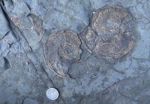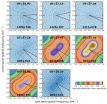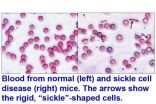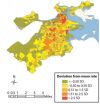(Press-News.org)
VIDEO:
Spanish researchers have studied adults’ accuracy in the recognition of the emotion causing babies to cry. Eye movement and the dynamic of the cry play a key role in recognition.
Click here for more information.
Spanish researchers have studied adults' accuracy in the recognition of the emotion causing babies to cry. Eye movement and the dynamic of the cry play a key role in recognition.
It is not easy to know why a newborn cries, especially amongst first-time parents. Although the main reasons are hunger, pain, anger and fear, adults cannot easily recognise which emotion is the cause of the tears.
"Crying is a baby's principal means of communicating its negative emotions and in the majority of cases the only way they have to express them," as explained to SINC by Mariano Chóliz, researcher at the University of Valencia.
Chóliz participates in a study along with experts from the University of Murcia and the National University of Distance Education (UNED) which describes the differences in the weeping pattern in a sample of 20 babies between 3 and 18 months caused by the three characteristic emotions: fear, anger and pain.
In addition, the team observed the accuracy of adults in recognising the emotion that causes the babies to cry, analysing the affective reaction of observers before the sobbing.
According to the results published recently in the 'Spanish Journal of Psychology', the main differences manifest in eye activity and the dynamics of the cry.
"When babies cry because of anger or fear, they keep their eyes open but keep them closed when crying in pain," states the researcher.
As for the dynamic of the cry, both the gestures and the intensity of the cry gradually increase if the baby is angry. On the contrary, the cry is as intense as can be in the case of pain and fear.
The adults do not properly identify which emotion is causing the cry, especially in the case of anger and fear.
Nonetheless, "although the observers cannot recognise the cause properly, when babies cry because they are in pain, this causes a more intense affective reaction than when they cry because of angry or fear," outlines Chóliz.
For the experts, the fact that pain is the most easily recognisable emotion can have an adaptive explanation, since crying is a warning of a potentially serious threat to health or survival and thus requires the carer to respond urgently.
Anger, fear and pain
When a baby cries, facial muscle activity is characterised by lots of tension in the forehead, eyebrows or lips, opening of the mouth and raised cheeks. The researchers observed different patterns between the three negative emotions.
As Chóliz notices, when angry the majority of babies keep their eyes half-closed, either looking in apparently no direction or in a fixed and prominent manner. Their mouth is either open or half-open and the intensity of their cry increases progressively.
In the case of fear, the eyes remain open almost all the time. Furthermore, at times the infants have a penetrating look and move their head backwards. Their cry seems to be explosive after a gradual increase in tension.
Lastly, pain manifests as constantly closed eyes and when the eyes do open it is only for a few moments and a distant look is held. In addition, there is a high level of tension in the eye area and the forehead remains frowned. The cry begins at maximum intensity, starting suddenly and immediately after the stimulus.
INFORMATION:
Reference:
Mariano Chóliz, Enrique G. Fernández-Abascal y Francisco Martínez-Sánchez. "Infant Crying: Pattern of Weeping, Recognition of Emotion and Affective Reactions in Observers". The Spanish Journal of Psychology 2012, Vol. 15, No. 3, 978-988 ISSN 1138-7416. http://dx.doi.org/10.5209/rev_SJOP.2012.v15.n3.39389
Contact:
Mariano Chóliz Montañés
Universidad de Valencia
Tel.: +34 96.386.48.53
Email: Mariano.Choliz@uv.es
Web: http://www.uv.es/choliz
Fear, anger or pain -- Why do babies cry?
2013-02-19
ELSE PRESS RELEASES FROM THIS DATE:
Study shows reduced risk of preterm birth for pregnant women vaccinated during pandemic flu
2013-02-19
ATLANTA- Pregnant women who received the H1N1 influenza vaccine during the 2009 pandemic were less likely to have premature babies, and their babies weighed more on average.
Influenza infection during pregnancy is associated with adverse infant outcomes such as preterm birth. Emory researchers from the Rollins School of Public Health, in a joint study with Kaiser Permanente of Georgia and the Mid-Atlantic States, evaluated the effectiveness of the H1N1 influenza vaccine in pregnant women against adverse infant outcomes during the 2009 pandemic. They compared birth outcomes ...
Jurassic records warn of risk to marine life from global warming
2013-02-19
Researchers at Plymouth University, UK, believe that findings from fieldwork along the North Yorkshire coast reveal strong parallels between the Early Jurassic era of 180 million years ago and current climate predictions over the next century.
Through geology and palaeontology, they've shown how higher temperatures and lower oxygen levels caused drastic changes to marine communities, and that while the Jurassic seas eventually recovered from the effects of global warming, the marine ecosystems that returned were noticeably different from before.
The results of the Natural ...
Towards a new moth perfume
2013-02-19
A single mutation in a moth gene has been shown to be able to produce an entirely new scent. This has been shown in a new study led by researchers from Lund University in Sweden. In the long run, the researchers say that the results could contribute to tailored production of pheromones for pest control.
Male moths can pick up the scent of a female moth from a distance of several hundred metres. The females produce sexual pheromones – scent substances that guide the males to them. There are around 180 000 species of moth and butterfly in the world, and most of them communicate ...
Radio telescope, GPS use ionosphere to detect nuclear tests
2013-02-19
WASHINGTON--U.S. Naval Research Laboratory radio astronomer, Joseph Helmboldt, Ph.D., and researchers at Ohio State University Department of Civil, Environmental and Geodetic Engineering analyzed radio telescope interferometry and Global Positioning Satellite (GPS) data recorded of the ionosphere during one of the last underground nuclear explosions (UNEs) in the U.S., codenamed Hunters Trophy.
Situated in the Plains of San Agustin, 50 miles west of Socorro, New Mexico, twenty-seven 25-meter parabolic dish antennas collectively make up the National Radio Astronomy Observatory's ...
Private Security Industry must be made transparent and accountable, study concludes
2013-02-19
The true cost of war is being masked by the secretive and largely unaccountable activities of a private security industry, according to a new study.
These invisible costs of war – both in terms of casualties and financial resources – are not reported and are hard to find because contractors are not subject to the same reporting structures and laws as the regular military, and many of their activities are protected from Freedom of Information requests.
Private security firms – usually run by former senior figures in the military, civil service or politics – are increasingly ...
Could an old antidepressant treat sickle cell disease?
2013-02-19
ANN ARBOR, Mich. — An antidepressant drug used since the 1960s may also hold promise for treating sickle cell disease, according to a surprising new finding made in mice and human red blood cells by a team from the University of Michigan Medical School.
The discovery that tranylcypromine, or TCP, can essentially reverse the effects of sickle cell disease was made by U-M scientists who have spent more than three decades studying the basic biology of the condition, with funding from the National Institutes of Health.
Their findings, published in Nature Medicine, pave ...
Buying ad time just got easier
2013-02-19
EAST LANSING, Mich. — Today's consumers switch between media forms so often – from TV to laptops to smart phones – that capturing their attention with advertising has gone, as one CEO explained, from shooting fish in a barrel to shooting minnows.
Now, a Michigan State University business scholar and colleagues have developed the most accurate model yet for targeting those fast-moving minnows. The research-based model predicts when during the day people use the varying forms of media and even when they are using two or more at a time, an increasingly common practice known ...
Could a computer on the police beat prevent violence?
2013-02-19
ANN ARBOR, Mich. — As cities across America work to reduce violence in tight budget times, new research shows how they might be able to target their efforts and police attention – with the help of high-powered computers and loads of data.
In a newly published paper, University of Michigan Medical School researchers and their colleagues have used real police data from Boston to demonstrate the promise of computer models in zeroing in on violent areas.
They combined and analyzed information in small geographic units, on police reports, drug offenses, and alcohol availability ...
Russian fireball largest ever detected by CTBTO's infrasound sensors
2013-02-19
Infrasonic waves from the meteor that broke up over Russia's Ural mountains last week were the largest ever recorded by the CTBTO's International Monitoring System. Infrasound is low frequency sound with a range of less than 10 Hz. The blast was detected by 17 infrasound stations in the CTBTO's network, which tracks atomic blasts across the planet. The furthest station to record the sub-audible sound was 15,000km away in Antarctica.
The origin of the low frequency sound waves from the blast was estimated at 03:22 GMT on 15 February 2013. People cannot hear the low frequency ...
Researchers create semiconductor 'nano-shish-kebabs' with potential for 3-D technologies
2013-02-19
Researchers at North Carolina State University have developed a new type of nanoscale structure that resembles a "nano-shish-kebab," consisting of multiple two-dimensional nanosheets that appear to be impaled upon a one-dimensional nanowire. But looks can be deceiving, as the nanowire and nanosheets are actually a single, three-dimensional structure consisting of a single, seamless series of germanium sulfide (GeS) crystals. The structure holds promise for use in the creation of new, three-dimensional (3-D) technologies.
The researchers believe this is the first engineered ...






